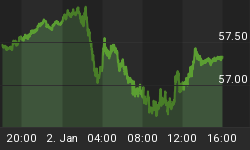Being threatened lately on numerous fronts, opioids have witnessed a dramatic decline in sales, but it’s a monster that’s created another monster, so when opioid giants are looking for another line of business, they’ve got nothing to fear: Anti-addiction is now thriving, and there are plenty of opportunities for revenue in both construction and deconstruction.
In 2017, The White House called opioid addiction a major crisis, even declaring it a public health emergency. Some $13 billion in funds is set to be funneled over the next two years to efforts to combat the opioid epidemic.
Last October, U.S. President Donald Trump signed a bill aimed at promoting research to find new drugs for pain management without addiction.
Also last year, Congressman Sean Patrick Maloney of New York filed a bill to outlaw online opioid sales, while over the past few years, some states and municipalities have filed lawsuits against drug companies, targeting opioid products.
In their lawsuits, local and state governments claim that dozens of companies made billions of dollars flooding the country with a variety of prescription pain pills. Critics also say there was a concerted effort by firms to mislead the public and physicians about the dangers.
Some believe that this year might just be the year when America explicitly responds to the crisis in a very real way. The biggest drug-makers and distributors in the U.S., such as Purdue Pharma, Walmart, Rite-Aid… face a wave of civil lawsuits that could total tens of billions of dollars in damages.
Since 1999, millions of Americans have abused prescription opioids. The National Institute on Drug Abuse reported this month that more than 115 Americans die from opioid overdoses every day, though not all of those drugs were obtained by prescription.
Still, sales are on the decline, and while numerous lawsuits and regulations have been tightened, but there are always creative ways to keep the profits coming.
In essence, pharma companies that are making the opioids are now looking to make billions more helping people cope with the addiction they’ve created.
One of them, and the one thought to be a driving force behind the opioid epidemic is Purdue Pharma.
Late last year, Rhodes Technologies Inc. was granted a patent for a new drug that could help treat opioid addiction. The initial euphoria dulled after it was discovered that the company was a subsidiary of Purdue Pharma. Richard Sackler, member of Sackler family who controls the company, is listed as one of the inventors on the patent. Related: Palladium Boom Sparks String Of Car Robberies
The patent is for a new and faster-acting form of buprenorphine. Buprenorphine controls drug cravings and is often given as a substitute to people hooked on heroin or opioid painkillers such as OxyContin.
In 2012, OxyContin manufacturer Purdue Pharma made a $2.8 billion in profit from sales of it. But by 2017, that figure had dropped to $1.8 billion. Still, it is a decent profit for a drug that leads to hundreds of thousands of emergency-room admissions each year due to side effects and has caused overdose deaths.
Burdened by lawsuits, last March, Purdue Pharma decided to stop marketing OxyContin to physicians, leading to another major profit dive.
Related: Automakers Go All-In On Electric Vehicles
For its role in creating the opioid epidemic, Purdue Pharma and three of its top executives were fined more than $630 million, while three executives were criminally sentenced to 400 hours of community service. However, Purdue Pharma also made about $35 billion from the sales of opioids.
Now, with all of this in mind, another recent creative sales pitch looks even innocent by comparison.
During the ongoing federal racketeering trial, it was found that a former pharmaceutical executive was accused of giving a lap dance to a doctor to boost opiate prescriptions.
By Fred Dunkley for Safehaven.com
More Top Reads From Safehaven.com

















